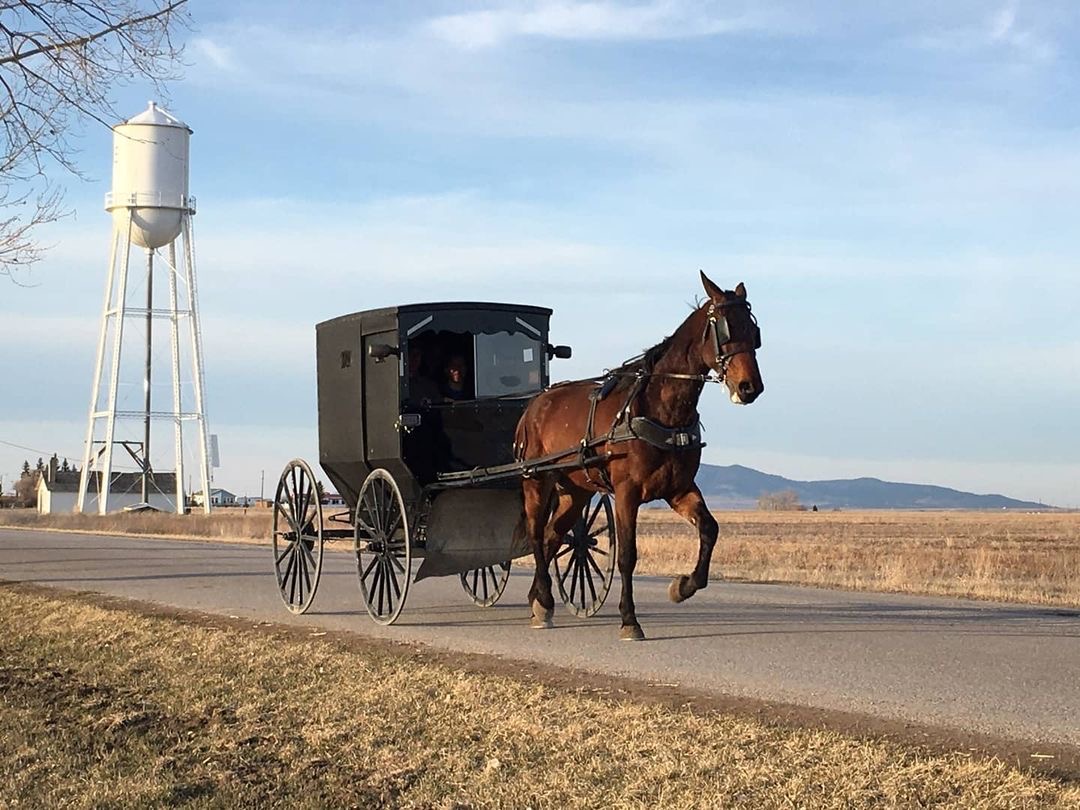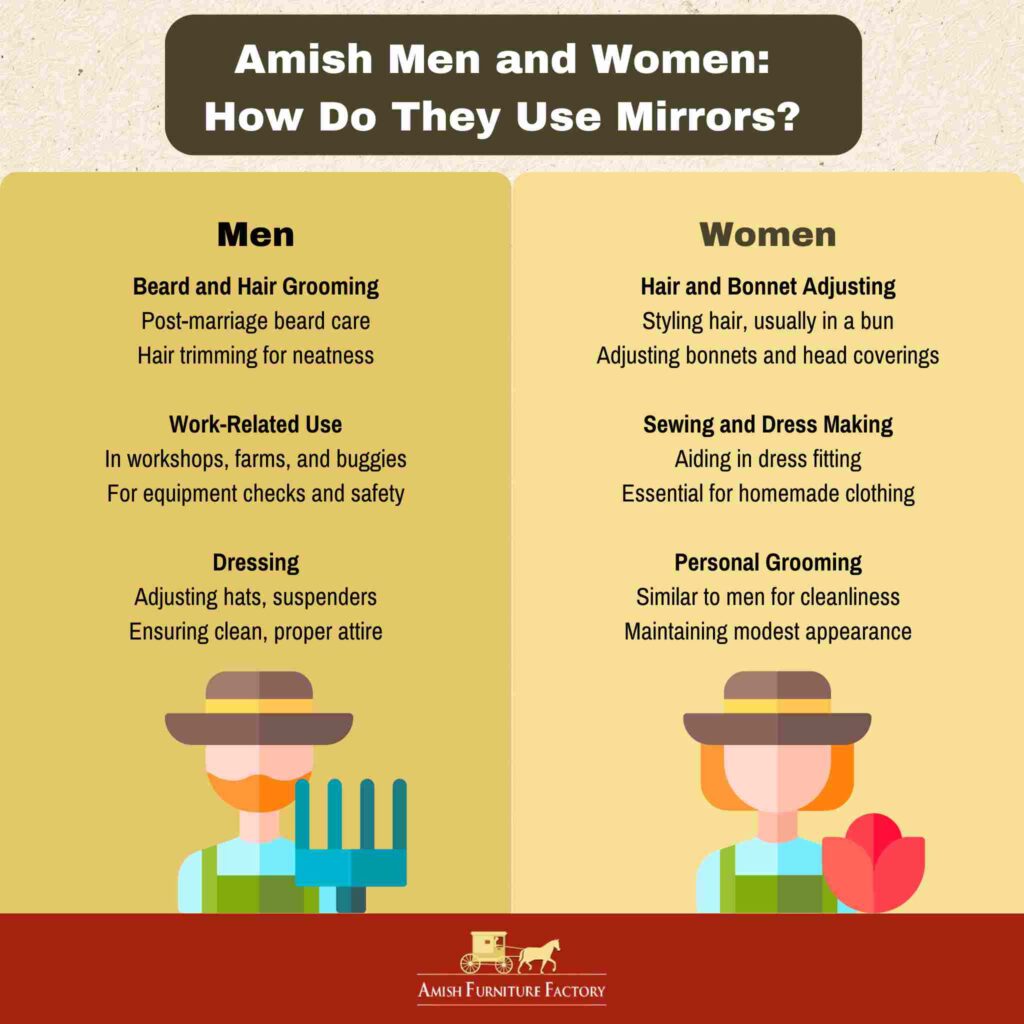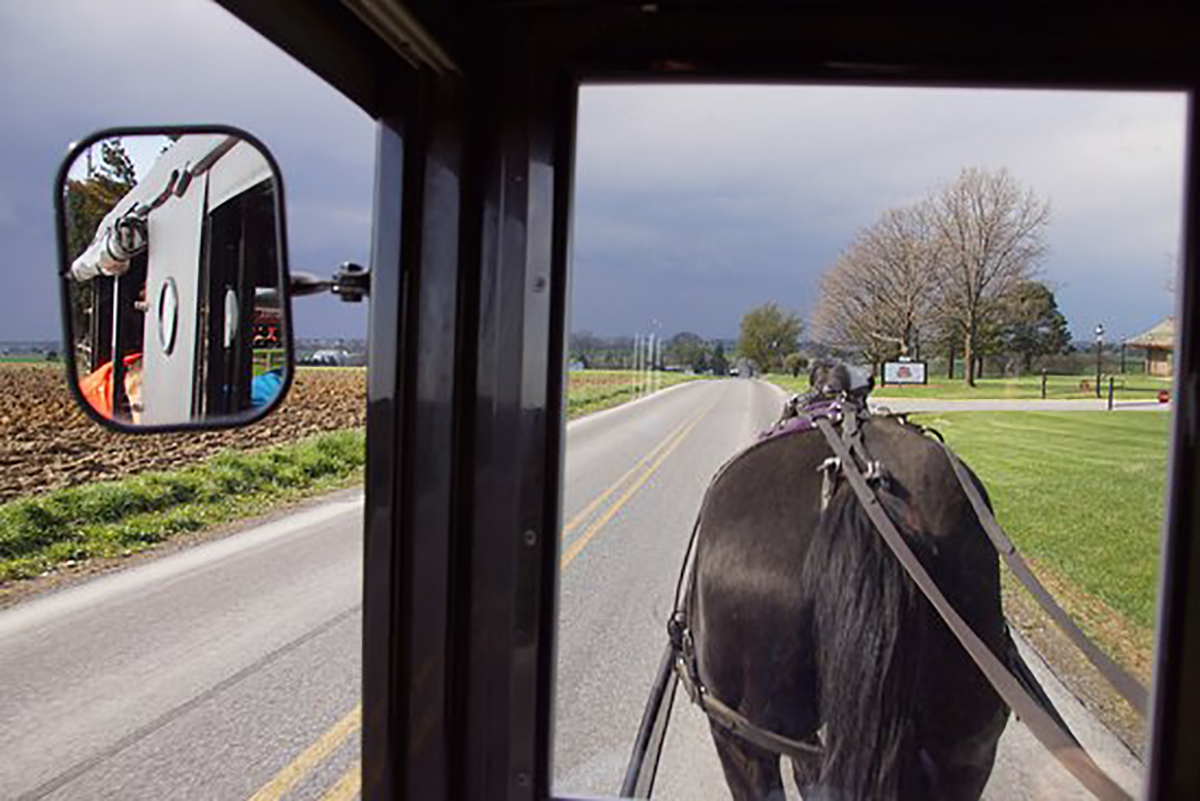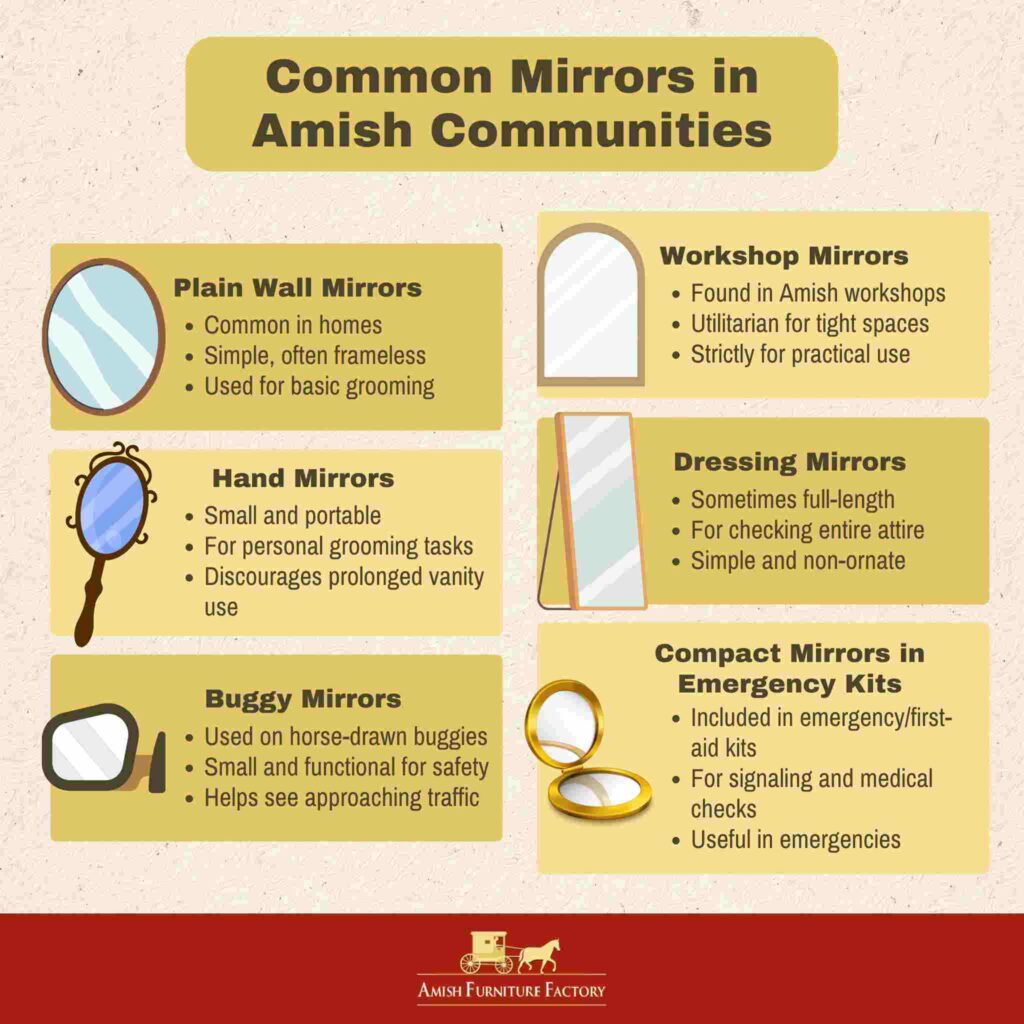
The Amish, known for their plain living and traditional ways, intrigue many with their unique practices. Among these, using mirrors, a standard item in many English homes, raises interesting questions about its place in Amish culture.
Amish people can look in mirrors for grooming and attire adjustment, in line with their values of modesty and simplicity. The extent of mirror usage varies across communities, balancing traditional beliefs with modern needs.
To further understand the fascinating intersection of Amish culture and their use of mirrors, let’s explore how their core values shape this aspect of their daily lives.
The Amish and Mirrors: Cultural Context
In the heart of Amish culture lies a deep-seated value system centered around simplicity and humility. These values significantly shape their lifestyle choices, including their perspectives on everyday items like mirrors.
The Amish community, stemming from Anabaptist traditions, prioritizes a life of modesty. This approach is rooted in their religious beliefs, which advocate for a life detached from vanity and pride.
In this context, mirrors are viewed through a lens of practicality rather than decoration. The Amish lifestyle, characterized by a lack of emphasis on physical appearances, informs their cautious use of mirrors.
Plus, in Amish homes, mirrors are not focal decoration points but serve practical purposes. Men might use them for shaving, while women use them to adjust their head coverings.
Practical Uses of Mirrors in Amish Life
The Amish community, known for their simple living, plain dress, and reluctance to adopt many conveniences of modern technology, have unique and practical uses for mirrors in their daily life. These uses reflect their values of simplicity, practicality, and community-oriented lifestyle. Here are some of the practical uses of mirrors in Amish life:
Transportation

In Amish buggies, mirrors are used for safety and navigation. Since buggies are often used on shared roads, mirrors help in seeing approaching vehicles, especially at intersections or when making turns.
Personal Grooming and Dress
While the Amish avoid vanity, basic mirrors are used for essential grooming and ensuring their appearance adheres to the community’s standards. This includes tasks like combing hair, straightening hats or bonnets, and checking clothing for cleanliness and proper fit.
In the Home
Mirrors in the home are simple and functional, used for practical purposes like helping to see when tying back hair or fastening clothing. Decorative or ornate mirrors are generally avoided to keep in line with the principles of humility and simplicity.
Workshops and Farms
In workshops, small mirrors might be used to help see around corners or in tight spaces, aiding in carpentry or mechanical work. On farms, mirrors can be useful in monitoring large animals or machinery, especially in areas that are difficult to see directly.
Community Spaces
In community buildings, such as schools or meeting houses, mirrors may be present for basic needs, like ensuring cleanliness or assisting in first aid, but they are always simple in design and reflect the community’s values of modesty and practicality.
Emergency and First Aid
Mirrors can be part of emergency kits in Amish households or community centers, useful for signaling in emergencies or for medical purposes like examining difficult-to-see areas.
Gender Differences in Mirror Usage
In Amish communities, where traditional gender roles and modesty are highly valued, there are distinct differences in how men and women use mirrors, reflecting their cultural norms and daily practices. These differences are based on the community’s emphasis on simplicity, modesty, and the distinct roles of men and women.

Men’s Usage of Mirrors:
Beard and Hair Grooming: Amish men, particularly after marriage when they grow beards, use mirrors for basic grooming. This includes trimming their beards and hair, ensuring a neat appearance in line with community standards.
Work-Related Use: In their workshops, farms, or while driving buggies, men may use mirrors for practical purposes, such as checking on equipment or seeing behind their buggies on the road.
Dressing: Mirrors are used for practical purposes like adjusting hats, suspenders, or ensuring Amish clothes are clean and in good repair, which is important in maintaining a presentable and modest appearance.
Women’s Usage of Mirrors:

Hair and Bonnet Adjusting: Amish women use mirrors to assist in styling their hair, usually in a bun, and adjusting their bonnets or head coverings, which are important aspects of their modest attire.
Sewing and Dress Making: Mirrors can be helpful for women when they are sewing or fitting dresses, an essential task as Amish women typically make their own and their family’s clothing.
Personal Grooming: Similar to men, women use mirrors for basic grooming, ensuring cleanliness and modesty in their appearance.
Shared Aspects:
Modesty and Simplicity: Both men and women use mirrors without any focus on vanity. The mirrors in Amish homes and public spaces are simple, without elaborate frames or decorations.
Teaching Modesty to Children: Parents use mirrors as tools to teach children about proper grooming and dressing in a way that aligns with the community’s values of modesty and simplicity.
Cultural Context:
Avoidance of Vanity: In both genders, the use of mirrors is strictly functional. The Amish teachings discourage vanity, so mirrors are not used for admiring oneself or for extensive grooming.
Community Standards: The use of mirrors is also influenced by the specific rules and standards of the individual Amish community, as there can be variations in how strictly certain practices are followed.
Types of Mirrors Used by the Amish
The Amish, known for their simple and modest lifestyle, use mirrors in a manner that aligns with their cultural values. The types of mirrors used by the Amish reflect their emphasis on practicality, functionality, and avoidance of vanity.
Here are some common types of mirrors you might find in Amish communities:
Plain Wall Mirrors: These are the most common type of mirrors in Amish homes. They are simple, unadorned, and often frameless or with a very basic frame. The size is usually modest, enough for basic grooming needs without encouraging vanity.
Hand Mirrors: Small hand mirrors are used for personal grooming. They are practical for tasks like adjusting hair or bonnets, and because of their size, they inherently discourage prolonged use for vanity purposes.
Buggy Mirrors: On their horse-drawn buggies, the Amish use small, functional mirrors. These are essential for road safety, allowing the driver to see traffic approaching from behind.

Workshop Mirrors: In Amish workshops, small, unobtrusive mirrors might be used for practical purposes, such as seeing into tight spaces or around corners. These mirrors are strictly for utility.
Compact Mirrors in Emergency Kits: The Amish may include small mirrors in their emergency or first-aid kits. These mirrors are used for signaling in case of emergencies or for medical purposes like checking wounds in hard-to-see areas.
Dressing Mirrors: In some cases, a full-length mirror or a larger wall mirror might be found for the purpose of checking one’s entire attire. However, even these mirrors would be simple and devoid of ornate features.

Reflecting on Simplicity: The Amish Way with Mirrors
The Amish view on mirrors offers insight into their simple, modest lifestyle, reflecting values like community and humility over vanity. This perspective provides a unique look into their meaningful way of life.
Differences in mirror usage among Amish communities show a culture that honors tradition yet adapts subtly to modernity. Their approach to mirrors, transcending mere functionality, symbolizes their enduring principles in a changing world.
